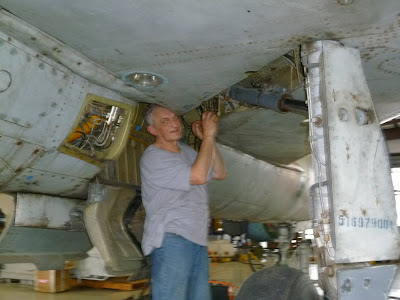The following photographs are provided courtesy of Ivan Voukadinov, who made the trip from Chicago for the event. Ivan is from Bulgaria, where his uncle was a Bulgarian Air Force pilot who flew our Bord 022 during its military career.
Photographers and movie makers refer to the time that straddles sunrise and sunset as "Golden Hour" because the natural lighting has a certain glow to it.
15 minutes after sunset, the MiG-23 was taxied into position on the runway and the afterburner was lit for approximately 3.5 seconds. The initial afterburner ignition is the most impressive because of the sheer volume of raw fuel that is sprayed into the tail pipe. The MiG-23 consumes approximately 2 gallons of Jet-A per second at max afterburner.
After slowing down and leaving the runway, the wings were swept to the 72° position, giving the Flogger its signature "go fast" look.

The MiG-23's appearance is even more menacing after dark. Taxi lighting consists of illumination on both sides of the aircraft. The landing configuration consists of illuminating only the larger light on the port side of the aircraft as Soviet pilots were taught to "look left" during landing.
The MiG-23 was the first Soviet design that took cockpit ergonomics into strong consideration and the internal lighting is particularly well thought out.
Even sitting still the MiG-23 looks like it's going Mach 2.35.
Many thanks to Ivan and all the other photographers who made it out to the museum!




















































